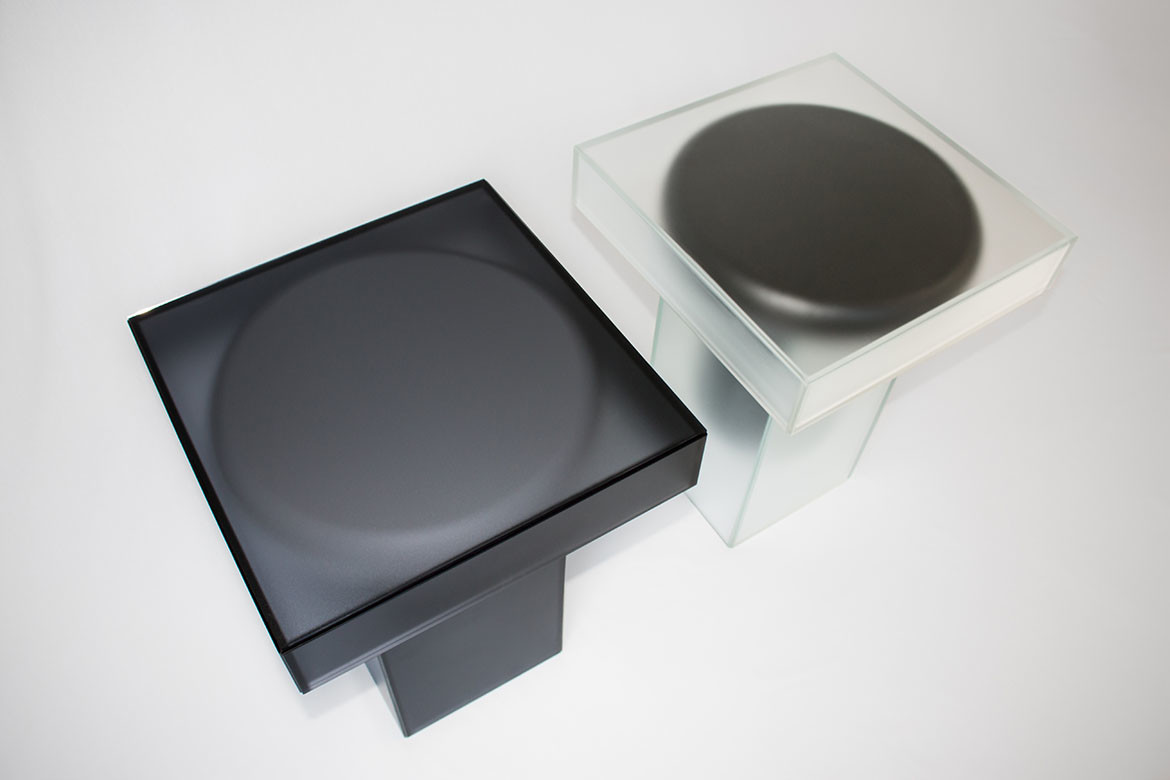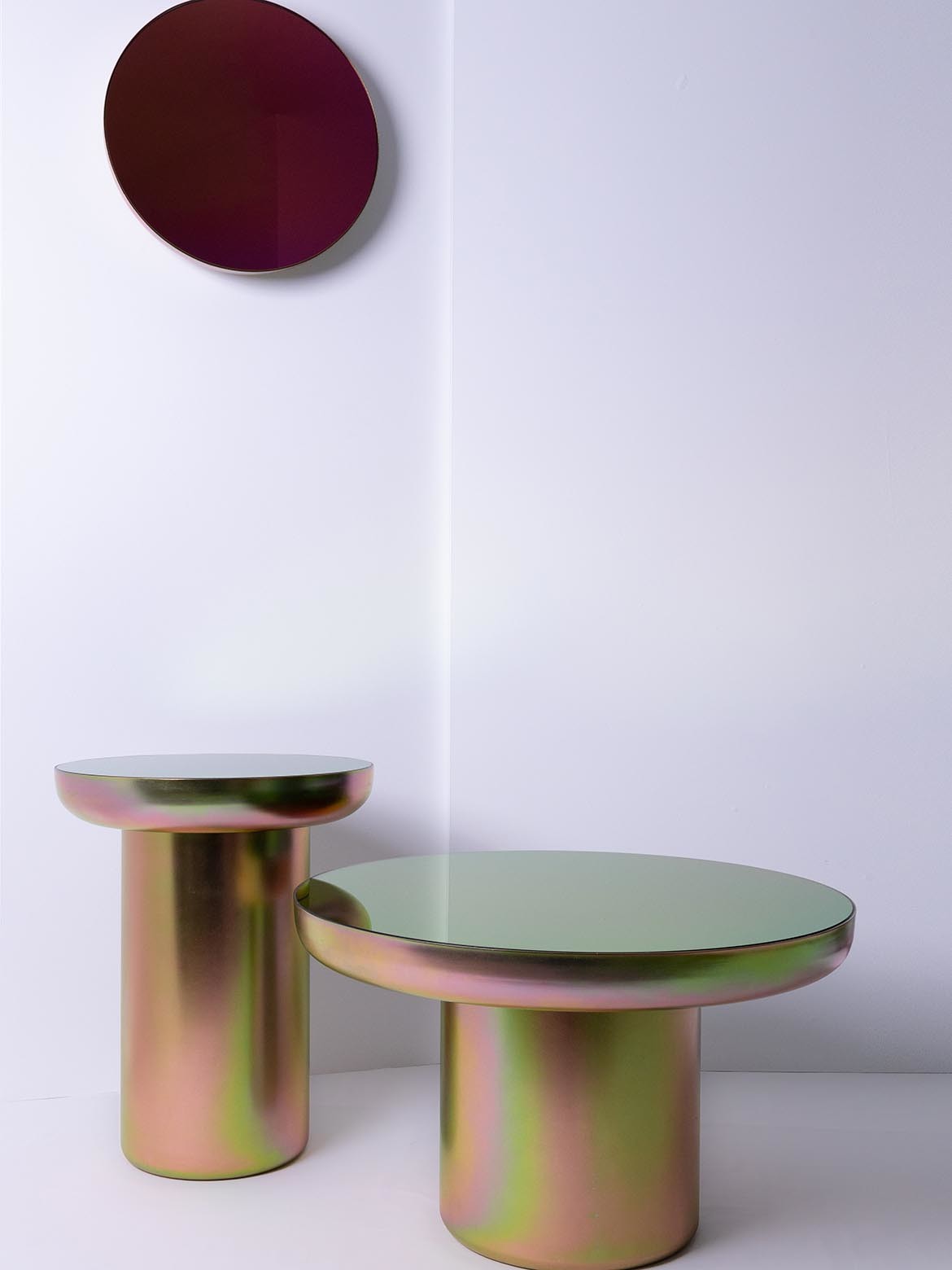Defining the work of emerging designer Dean Norton isn’t easy. Blurring the lines between sculpture and furniture, lighting and object, his pieces are versatile and often minimalist. If they are defined by anything, it is perhaps a quality of openness – open to different inspirations in terms of time, place and material; open to learning new methods of design production. Objects, ultimately, that are radically open to interpretation by their users.
Take the Moodlum collection, for example. The name is a portmanteau of mood and hoodlum: “instead of troublemakers, it’s mood-makers for your space,” Norton explains. There is a deep focus on mood, emotion and personal experience throughout his work, finding expression in seamless sculptural form.
The mood, however, is not dictated or predetermined: “I wanted the shape and form to work with the concept so it would merge and feel soft in space, to be very minimal so that it would be able to complement your own style.”
It is this delicate balance – between a minimalist object on one hand, open to new spaces or emotional responses and, on the other, evoking a sense of the creator’s own personal mood – that makes the final products unique. In these pieces, Norton has achieved the seemingly paradoxical, at once conveying personal emotion and creating a blank canvas for the reception of your own mood.

At first glance, it might seem that form and shape are the defining aesthetic qualities of Norton’s products. Some pieces, for instance, are available as identical forms but in different materials. The creative inspiration for his work, however, is much more multifaceted than the formal dimension alone.
At times, materiality is explored via form; elsewhere, it is form explored via materiality. As Norton says, “the very first pieces were all in white and I look at that as the blank canvas – then over time it’s evolved. The materials I’ve applied to it have been in response to a new technique that I’ve found or through working with an interior designer on a specific commission.”

Amidst this versatility and openness, the common denominator is personal experience. A particularly poignant and visible example of this is the Containa piece, developed by Norton in response to pandemic lockdown.
“I think people have really connected with Containa because we all went through the same thing. I was feeling really contained myself and decided to combine everything I knew at that time – working with wood, glass and new forms – and just contain it.” Particular experiences of times and places are conveyed in form and materiality but the final objects retain a capacity for reinterpretation in new settings.

Having moved to Australia from the UK, where he grew up and studied graphic and interior design, Norton’s influences are varied. It is not the setting of Australia as a place that determines his work, however, but rather the experience of a new start that moving to Melbourne represented.
The real link to Australia is in the emphasis on making the products in Melbourne. Norton enjoys visiting the factories where they’re made, another aspect of openness in the form of learning about new techniques and materials.
Norton is developing a multifaceted creative process that moves seamlessly between personal experience, material exploration, technical learning, design collaboration and minimalist forms. The results are finely crafted personal objects allowing for the creation of mood in new spaces.
Dean Norton
deannorton.com.au
Photography
Mischa Baka for Alt. Material and courtesy of Dean Norton




We think you might also like this piece on Melbourne lighting designer Christopher Boots

